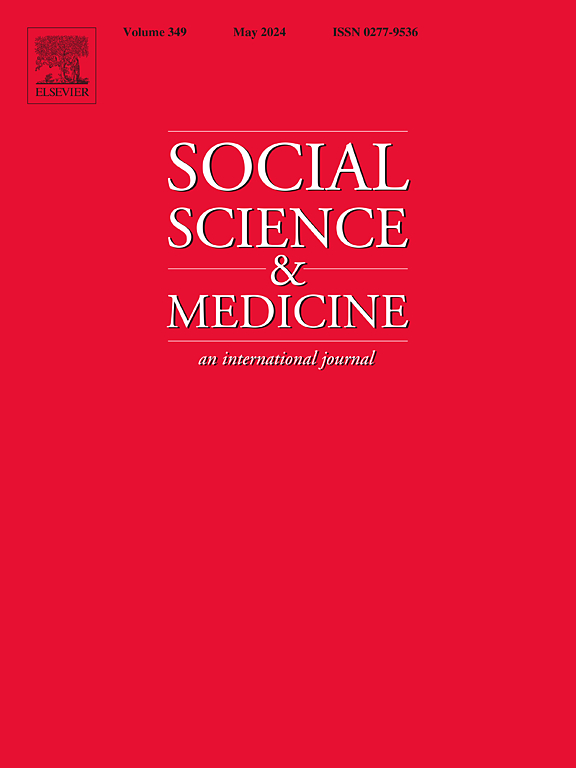Beyond past-due bills: The varieties of medical debt used to finance healthcare
IF 5
2区 医学
Q1 PUBLIC, ENVIRONMENTAL & OCCUPATIONAL HEALTH
引用次数: 0
Abstract
The high cost of medical care in the United States has led to widespread medical indebtedness in the population. While previous work has highlighted the reciprocal relationship between debt and health, we know less about how families use and experience diverse kinds of debt resulting from medical care. This article draws on in-depth interviews with women in the Midwest having trouble paying for healthcare to understand the ways they use debt to finance care for themselves and their families. I find that in addition to conventional medical debt—past-due bills or payment plans from providers—these women draw on multiple sources of credit in their pursuit of healthcare. Use of credit cards, loans or gifts from family and friends, and other consumer credit was widespread. Current measures of conventional medical debt might be underestimating the prevalence of debt acquired to pay for healthcare, especially among more advantaged households. I argue that researchers must adopt a broader definition of medical debt to encompass all the debt acquired to finance medical care to fully grasp the financial consequences of high medical costs in the US. I also argue that, like other types of debt, medical debt is a double-edged sword—a resource that means more people have access to care, but also a burden in an uncertain future.
过期票据之外:用于资助医疗保健的各种医疗债务
在美国,高昂的医疗费用导致了广泛的医疗负债。虽然以前的工作强调了债务与健康之间的相互关系,但我们对家庭如何使用和经历医疗保健带来的各种债务知之甚少。这篇文章深入采访了中西部那些在支付医疗费用方面遇到困难的女性,以了解她们利用债务为自己和家人提供医疗费用的方式。我发现,除了传统的医疗债务——过期账单或医疗服务提供者的付款计划——这些女性在追求医疗保健时利用了多种信贷来源。使用信用卡、家人和朋友的贷款或礼物以及其他消费信贷的情况很普遍。目前对传统医疗债务的衡量可能低估了为支付医疗费用而获得的债务的普遍程度,尤其是在条件较好的家庭中。我认为,研究人员必须采用更广泛的医疗债务定义,以涵盖为医疗保健融资而获得的所有债务,以充分掌握美国高医疗费用的财务后果。我还认为,像其他类型的债务一样,医疗债务是一把双刃剑——一种资源,意味着更多的人可以获得医疗服务,但也是不确定未来的负担。
本文章由计算机程序翻译,如有差异,请以英文原文为准。
求助全文
约1分钟内获得全文
求助全文
来源期刊

Social Science & Medicine
PUBLIC, ENVIRONMENTAL & OCCUPATIONAL HEALTH-
CiteScore
9.10
自引率
5.60%
发文量
762
审稿时长
38 days
期刊介绍:
Social Science & Medicine provides an international and interdisciplinary forum for the dissemination of social science research on health. We publish original research articles (both empirical and theoretical), reviews, position papers and commentaries on health issues, to inform current research, policy and practice in all areas of common interest to social scientists, health practitioners, and policy makers. The journal publishes material relevant to any aspect of health from a wide range of social science disciplines (anthropology, economics, epidemiology, geography, policy, psychology, and sociology), and material relevant to the social sciences from any of the professions concerned with physical and mental health, health care, clinical practice, and health policy and organization. We encourage material which is of general interest to an international readership.
 求助内容:
求助内容: 应助结果提醒方式:
应助结果提醒方式:


